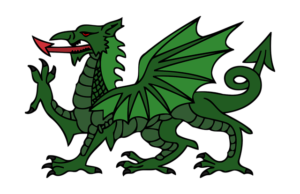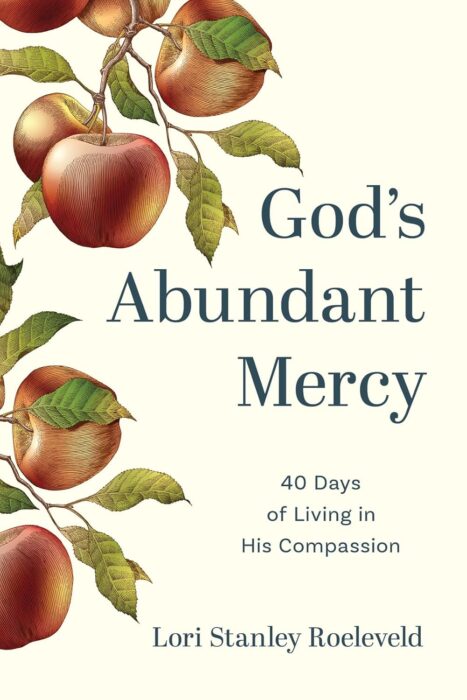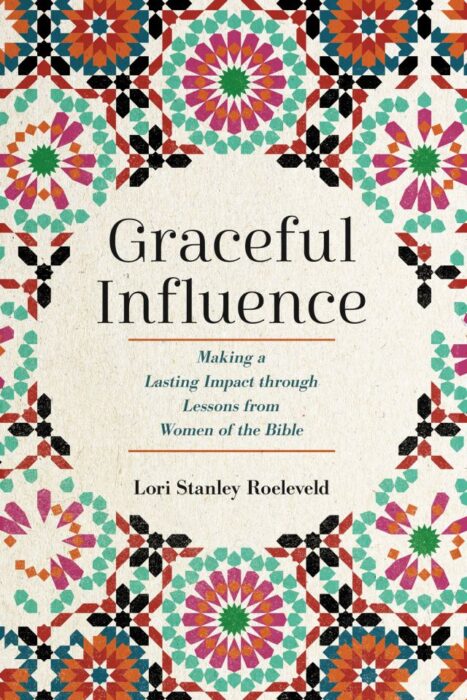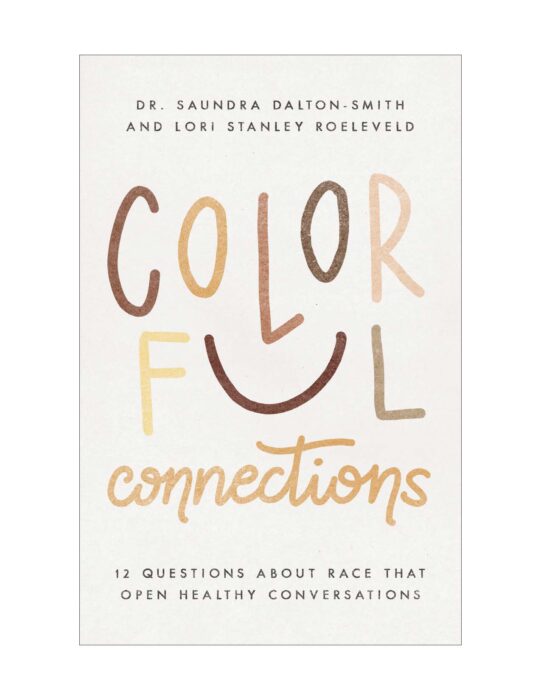Fairy tales have evolved. Have you noticed?
I remember thinking that twenty years back when I read a library book to my children about The Gingerbread Man. Do you remember him? “Run, run, as fast as you can! You can’t catch me, I’m the Gingerbread Man.”
In my childhood, the gingerbread man ran from the childless couple who baked him. He kept running from all pursuers, believing himself smarter and faster than everyone else. Finally, the fox outwitted and devoured him. Lesson learned. Don’t run away from your loving home because dangers await those who think they know better.
In my children’s generation’s version, the gingerbread man gets eaten but on the last page, somehow miraculously escapes the stomach of the fox! He learns a wise lesson about the danger of running away but there are no real consequences for his actions.
What? It even annoyed my kids. “That makes no sense. Why would someone even write that story?” my son asked. I wondered that, too.
When I was a child, fairy tales were a little frightening – children who disobeyed, wandered, or were lazy were cooked in witches’ stoves, lost in the woods, eaten by wolves, or missed out on meals and fun. They were, in fact, stories that trained the heart to recognize danger in real life – the danger of disobedience, of wandering from the truth, of trusting dark forces one meets on the run. In the world of my children’s sanitized fairy tales, disobedient children endure “a bit of a fright” but always have second chances or are rescued at the last minute. Whew. No need to worry about a little disobedience. The story always ends well. Not a kind lesson to teach children.
 I thought about this again, ten year’s later when I stood in the children’s book section to find gifts for my nephews. The shelves were full of dragons.
I thought about this again, ten year’s later when I stood in the children’s book section to find gifts for my nephews. The shelves were full of dragons.
I’d never seen so many dragons. They were ornate, bejeweled, intricately designed, and beautiful. But what struck me most about this bevy of beasts was that they were primarily tame. Not only tame, but friendly – some even downright heroic.
Dragons have always fascinated me and I think there should be a dragon in every children’s tale – but dragons are never tame and, traditionally, they are there to be conquered, not befriended. In Biblical literature, the dragon represents the evil one – the one who comes against Christ and the church. In Revelation 12, Michael, the archangel defeats the dragon. “Then war broke out in heaven. Michael and his angels fought against the dragon, and the dragon and his angels fought back. But he was not strong enough, and they lost their place in heaven. The great dragon was hurled down—that ancient serpent called the devil, or Satan, who leads the whole world astray. He was hurled to the earth, and his angels with him.”
He is a very clever dragon. He has learned the perfect lie for each generation.
In earlier generations, the dragon fed on people’s anxieties. He terrorized them and convinced them he was powerful and they could not defeat him.
 In later generations, the dragon fed on people’s avarice by enticing them with his great stores of the promised treasure he protected in his lair.
In later generations, the dragon fed on people’s avarice by enticing them with his great stores of the promised treasure he protected in his lair.
 A more recent generation, surrounded by anarchy, yawned with apathy as it shared a puff of the dragon’s favorite pipe and leaned its head against the dragon’s breast to watch the light dance off his scales.
A more recent generation, surrounded by anarchy, yawned with apathy as it shared a puff of the dragon’s favorite pipe and leaned its head against the dragon’s breast to watch the light dance off his scales.
In this generation, the dragon feeds on our arrogance and convinces us that we can tame him, that we can make him our friend. We sit at his table to have talks, discussing the details of a brokered peace.
The dragon lies.
He lies to us and he lies to our children. He lies so well, we feed the lie to our children with their bedtime milk and cookies. “Woe to those who call evil good and good evil, who put darkness for light and light for darkness, who put bitter for sweet and sweet for bitter. Woe to those who are wise in their own eyes and clever in their own sight.” (Isaiah 5:20-21)
Some of you will argue with me that I’m just talking about stories. That I shouldn’t be concerned about children’s fairy tales and book series read by schoolchildren. And, of course, I’m not declaring that every story told with a friendly dragon is evil or wrong. Let imagination take flight. Imagine dragons, by all means, but tread carefully on a symbol God has used for the evil one.
I will tell you what the dragon knows: story is the key to the treasure store of our hearts and our imaginations. Once he enters there, he can weave a web of lies so finely entwined with our own neural pathways we believe the thoughts and ideas are our own. When children nurse on lies from the cradle, they cannot tell from the truth as they grow. When they ingest the truth with their mother’s milk, they develop an appetite for truth that cannot be satisfied with falsehood.
Stories are sippy cups for truths that are so powerful and real they can slay dragons. Fiction is just truth with wings. It’s not wrong to weave a tale and it’s not even wrong in those tales to befriend a dragon as long as we remember that the truth is – dragons are never, never tamed.
it’s not even wrong in those tales to befriend a dragon as long as we remember that the truth is – dragons are never, never tamed.
So do write a dragon into every story – whether for children or those who think themselves grown – but never think him tame enough to turn your back on him.
Remember, a story is never just a story. Sometimes a story is sword.
The Evolution of Dragons (or sometimes a story is a sword) https://t.co/8dgcnXqNUg#dragons#amwriting#amwritingfantasy
— Lori Roeleveld (@lorisroeleveld) August 3, 2016
I’d LOVE to hear your comments so if you’re reading this in email, CLICK HERE to comment!












The Conversation
Love this, Lori, along with everything else you write. I’ve been reading your posts for a couple years (read Red Pen Redemption in one sitting… drank it up!) but I’m not much of an “online presence” kind of person, so I never comment. Just wanted to let you know that you are a fabulous and talented writer, and one of the most insightful people I know of. In case you ever feel doubt or discouragement, please know that you are absolutely a vessel Christ is using to shine his light, and a blessing to many. I tell my closest and most beloved friends about your blog, as well as anyone who asks about my favorite blogs/Bible studies. Please keep writing and keep shining that light God has given you!
I certainly do wrestle with doubt and discouragement at times, Alana, so I deeply value your encouragement. I understand about not being much of a web presence. It does help to remember you’re there reading. Thank you! Mercy and grace, Lori
Wow – I love this! Thank you.
Like Alana, I don’t often post, but your posts are very important to me, pointing out just the right Scripture verse I need to hear and giving words to my fractured thoughts. I can feel the power of the Holy Spirit in your words, and I love you for that.
Last week, two different people talked about the damage of entitlement mentality. One was a parent upset about a child who didn’t think consequences should apply. The other a counselor who attended a workshop on violence and learned terrorists often have the attitude that the world owes them a better deal. Perhaps the shifting of fairy tales from bad behavior equals punishment to no one suffers, feeds into this mentality. Thanks for another thought-provoking post, Lori!
As a retired elementary teacher and a grandmother of two young boys, I so appreciate your encouraging moms and their children to become discerning readers. God has gifted you to put into words important concepts we all benefit from pondering. You encourage us to grow in the knowledge and love of Jesus. Thank you! Patsy
There is most definitely a place for evil dragons in stories, and all the symbolism associated with them in traditional Western thought. Ohhhhh yes. But lions are also portrayed in a dangerous light in scripture; they are violent, ravenous beasts that kill and carry off livestock and people, and their roars inspire terror. Even the usage of the lion as a symbol for Christ is “not a tame lion,” to borrow Lewis’ phrasing. People had to *live* with lions in the biblical region and era of history; they knew them for the real-life monsters of the inhospitable wilderness that they are, without our modern, romantic, far-removed-from-nature sentimentality. Jesus is not only majestic, He is utterly self-confident, unpredictable, unstoppable, and tremendously dangerous. Hence, a lion. In fact, God is more than once described with deadly lightning and swirling clouds of darkness, and scripture says He makes flames of fire his messengers; devastating locust swarms are His armies, and the Angel of Death moves and halts at His command. All of that sounds an awful lot like villain/Satan imagery to me, if we look at traditional story symbolism and expectations.
If a lion can be cuddled up to in a story where it isn’t even meant to represent Christ, there’s little if any reason a dragon can’t fill the same role where it isn’t even meant to represent Satan and may not physically resemble a snake in the least. Symbols have their place, but they aren’t consistent between cultures or even within scripture, and not everything in every story is intended to be symbolic (sometimes some of us just thrill to the thought of cuddling a powerful, fuzzy lion *or* a protective winged beast). Trying to make it all symbolic, if it isn’t, is what can cause confusion.
As a side note, you might be interested to read the first book in the Dragons In Our Midst series (by Bryan Davis), “Raising Dragons.” It’s a modern fantasy story for youth, making very good use of dragons–good and evil–with Arthurian ties, from a Christian author and with blatantly Christian stuff in it. I was highly impressed, and I don’t say that a lot. For a brief insight and teaser, here’s “Merlin’s Riddle” from the beginning of the book (hopefully not a copyright issue since I’m using it to highly *recommend* the book and hopefully get someone to read it):
When dragons flew in days of old
With valor in their wings,
One fell prey to evil’s song
And learned what Satan sings.
Goliath, stained with Satan’s words,
Made other dragons flee,
For songs like leaven spread decay
Corrupting souls born free.
Now Satan’s scales coat dragon lore;
He hides between the lines.
He sings foul words in books corrupt
And dances on their spines.
Are dragons vile? Are dragons tame?
Depends on whom you ask.
Do scales hide tricks of Satan when
He dons a fearful mask?
One man corrupted all his kin;
One dragon brought all shame.
One Man redeemed His fallen race;
Will dragons find the same?
Yet dragons dwell in hearts of men,
From God and some from baals,
And some sing words with angel’s wings
While most chant Satan’s scales.
God redeems what men cannot
Forgives what e’er thou didst
Who else can save the men of earth
With dragons in our midst?
Love Bryan Davis and as I said, it’s not always wrong to use a friendly dragon in a story
This is excellent.
I would extend your insight way past children’s fairy tales, however. Much of the Christian fiction I’ve read is so sanitized that it paints a picture perfect world. It doesn’t show the battle with the enemy.
Several Christian readers I know have grown weary of the fiction that is so sanitized that there aren’t real-life consequences and struggles. I would love to see a turn back to reality whether in Christian fiction, or in fairy tales. There are real-life consequences to our actions and, as you said, we must never feel safe in turning our backs on the dragons.
I think dragons are just getting to be good now because of the overall coolness factor. Same goes for other predators that get featured in stories. I mean, who would ride a horse if you can ride a dragon?
Another reason the popularity may have started is due to subverting stereotypes. For example, some of the new Narnia movies had good Minotaurs even though it’s not something C. S. Lewis would have likely done. I think this makes sense though. After all, would God really make a truly evil intelligent species with no hope of redemption? I find it rather sad that many times, Christians are the ones who argue against showing that monsters can be redeemed, when we, as sinners, were little different from the monsters of the fairy tales.
When it comes to softening fairy tales, yes, in some ways, it seems like a bad idea. Part of the reason though, may be marketing. As a reader, I don’t want to see a story end with the main character dead because they messed up. I’m guessing it’s the same for little kids. They’re not going to want to hear a story with a sad ending every night.